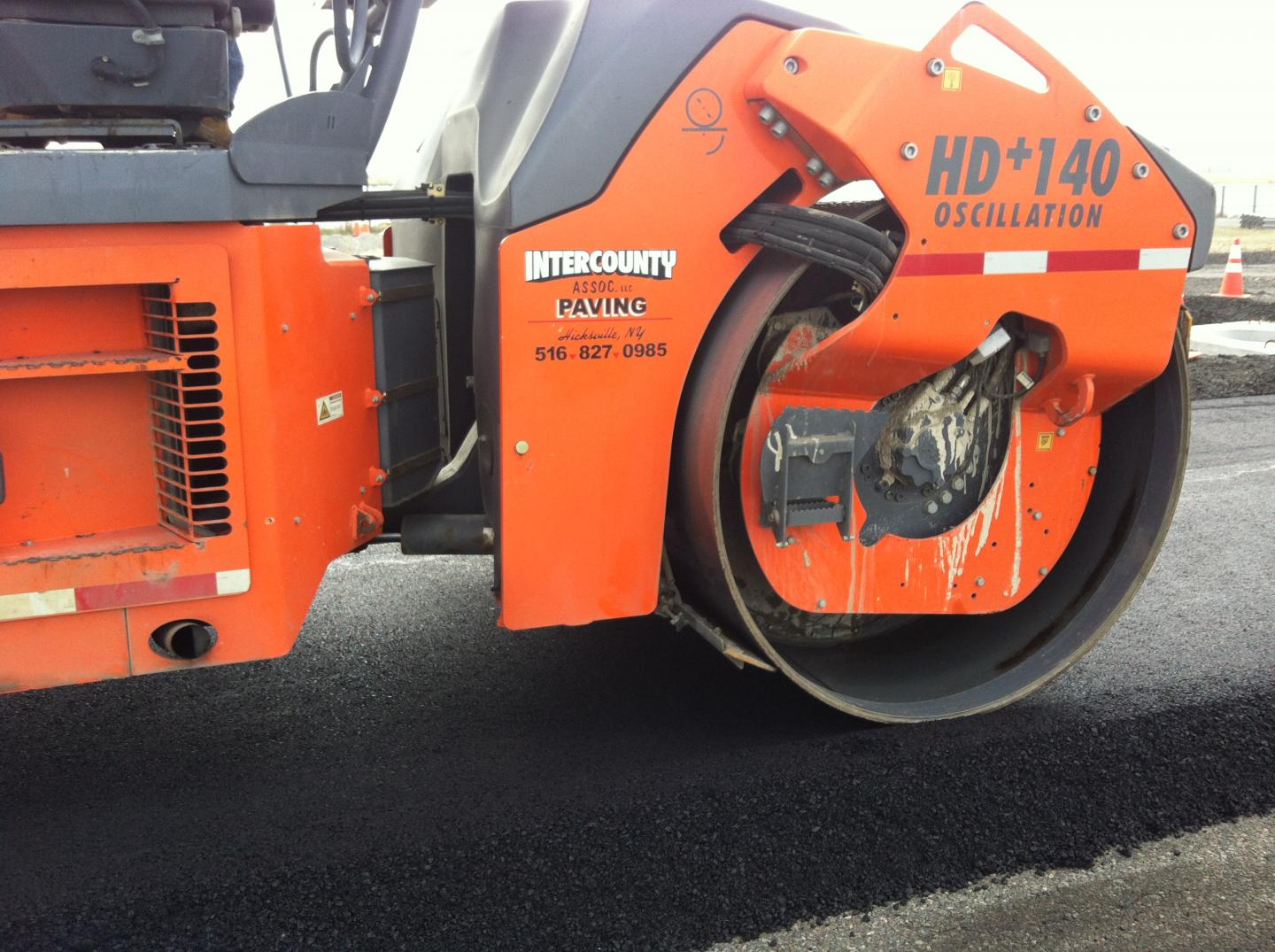
A machine compacts asphalt over existing pavement at a construction site at John F. Kennedy International Airport in New York City. Credit: Hao Wang/Rutgers University-New Brunswick
The fight against greenhouse gas emissions is being taken to the streets, as new research finds that the impact of keeping roads in good shape more than offsets pollution generated during road construction, and reduces greenhouse gas emissions.
Rutgers University researchers have discovered that extending the life of pavement through preventative maintenance will reduce greenhouse gas emissions by up to 2 percent, while also saving money for transportation agencies by between 10 and 30 percent and saving drivers between 2 and 5 percent in a number of ways including fuel consumption, tire wear, vehicle repair and maintenance costs.
“When pavement is in its early failure stage, preventive maintenance can restore performance and extend pavement life with lower costs,” study lead author Hao Wang, an associate professor who focuses on infrastructure engineering in the Department of Civil and Environmental Engineering at Rutgers University-New Brunswick, said in a statement. “Pavement preservation leads to significant environmental benefits due to the improved surface condition, which results in smooth pavement, saves energy and reduces user costs.”
In the study, the researchers focused on the long-term pavement performance (LTPP) database, which is a comprehensive research project that includes two fundamental classes of studies and several smaller studies aimed at investigating specific pavement related details critical to pavement performance. The team used the database, which is maintained by the U.S. Department of Transportation’s Federal Highway Administration, to measure the environmental impact of roadway repairs in terms of carbon dioxide emissions linked to global warming, particularly in repairs that preserve asphalt pavement.
They used a full life-cycle approach to identify the carbon footprint of common methods of preserving pavement, such as the thin overlay method, which involves placing up to two inches of asphalt on roads, and the chip seal method, which involves spraying asphalt emulsion on pavement. They also looked at the slurry seal method, which includes laying aggregate in the chip seal method, spreading a slurry over pavement and filling cracks with rubberized asphalt or polymer-modified asphalt with some filler called the crack seal technique.
To predict the carbon dioxide emissions at the use stage, the researchers used the EPA’s MOtor Vehicle Emission Simulator (MOVES), as well as pavement roughness models obtained from the LTPP program.
They found that the best preservation method is thin overlay, which leads to an overall reduction in carbon dioxide emissions of 2 percent due to large reduction in road roughness. On the other end of the spectrum, the crack sealing method only results in a 0.5 percent reduction in carbon dioxide emissions, the lowest reduction of all the techniques studied.
The differences in emissions produced by the various preservation techniques is mainly because of the different raw material components and manufacturing processes used.
Next, the researchers plan to develop life-cycle assessment tools for evaluating the environmental impact of roadway projects.
Transportation represents the largest source of greenhouse gas emissions, generally caused by carbon dioxide emitting from vehicles.
The study was published in the International Journal of Sustainable Transportation.




